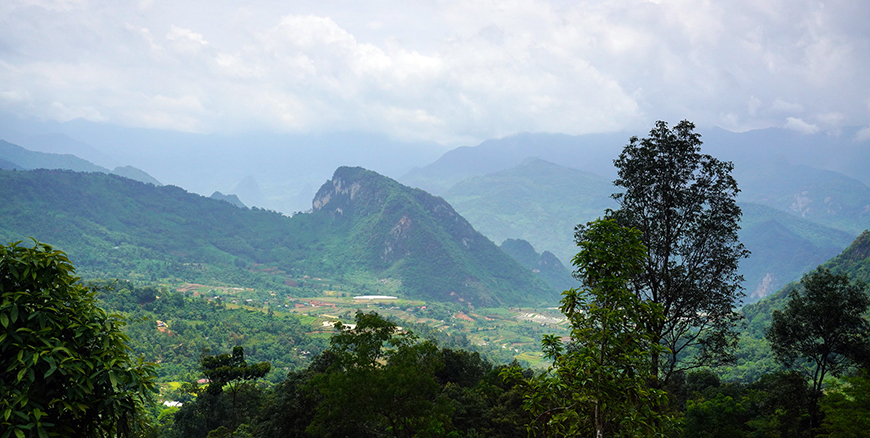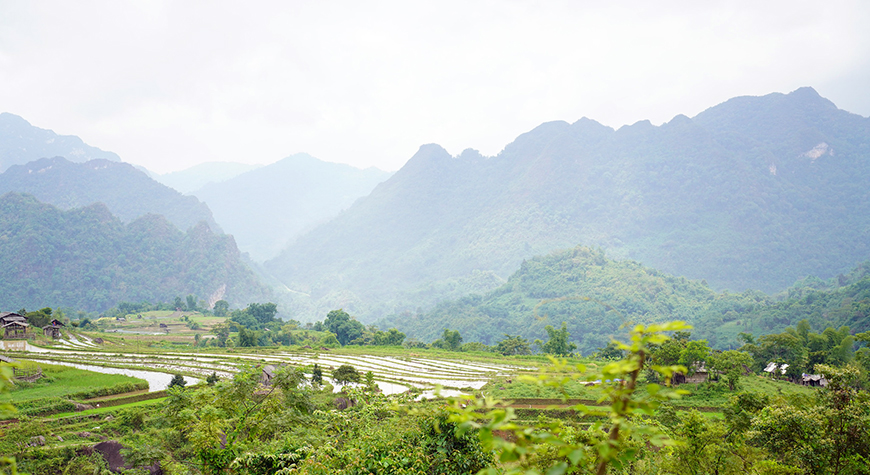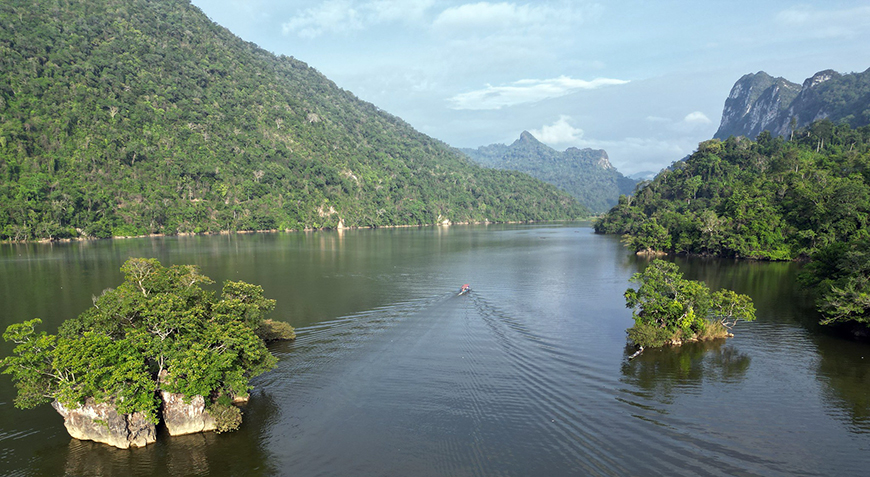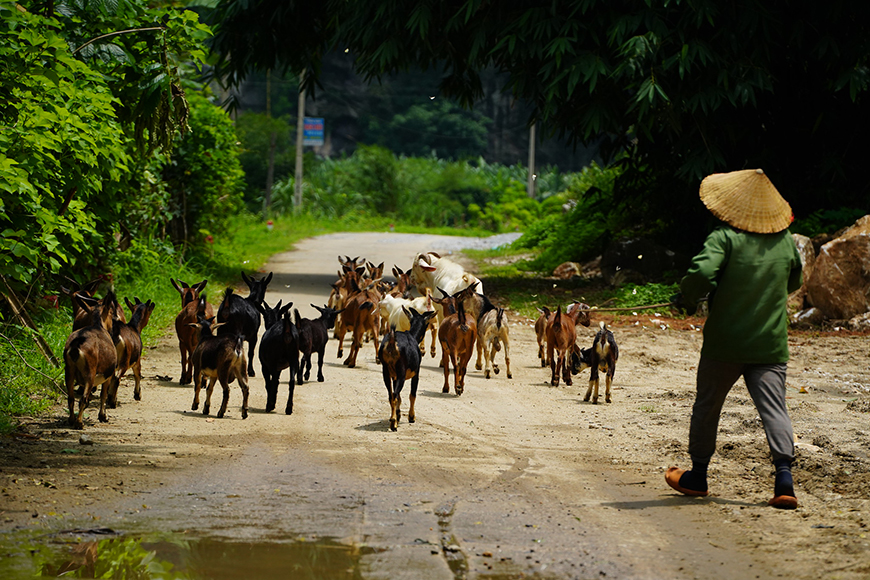Ba Be National Park, located in northeast Vietnam, is recognized as one of the country's most important biodiversity reserves. However, like many ecosystems around the world, this natural gem is suffering the effects of climate change. This article aims to examine the signs and symptoms of climate change in the park, as well as the measures that can be taken to mitigate and adapt to these changes.

Ba Be national park is suffering the effects of climate change - Source : Mr Linh's Adventures
Signs and symptoms of climate change in Ba Be
The indicators of climate change in Ba Be are multiple and intensifying over time. Among the most notable are :
- ♦ Rising average temperatures: Data show a rising trend in temperatures, with hotter summers and shorter winters. This can have significant impacts on the park's ecosystems, particularly on plant and animal phenology.
- ♦ Changing rainfall patterns: Total annual precipitation is increasing, but with a more irregular distribution. Episodes of intense rainfall and flooding are more frequent, increasing the risk of flooding, while periods of drought are becoming longer.
- ♦ Rising water levels in lakes and rivers: Water levels in Lake Ba Be, the focal point of the park, are gradually rising, with the potential to flood some riparian areas and affect aquatic habitats.
♦ Extreme weather phenomena: The increasing frequency and intensity of storms, high winds and dense fog are putting a strain on the park's ecosystems and threatening the safety of visitors and local populations.

Ba Be national park is suffering changing rainfall patterns - Source : Mr Linh's Adventures
Impacts of Climate Change on Biodiversity
Climate change is having a devastating impact on the rich biodiversity of Ba Be National Park. We observe :
- ♦ Ecosystem disruption: Climate change is having a significant impact on the park's ecosystems, notably on plant phenology, bird migrations and the reproductive cycles of many species.
- ♦ Habitat degradation: Rising temperatures, changes in precipitation and extreme weather events lead to the degradation of natural habitats, endangering the survival of many species.
- ♦ Water stress: Prolonged periods of drought affect access to water for plants and animals, threatening their survival and reproduction.
- ♦ Spread of disease: Climate change can create favorable conditions for the emergence and spread of diseases affecting flora and fauna.
- ♦ Proliferation of invasive species: Changing climatic conditions favor the introduction and spread of invasive species, threatening native biodiversity.
- ♦ Species migration: Certain species, unable to adapt to environmental change, are forced to migrate to more favorable areas, upsetting food chains and ecological balances.
► Learn more :Ba Be National Park: A natural and scientific jewel in North Vietnam

Ba Be lake and its fragile ecosystem - Source : Mr Linh's Adventures
Actions to cope with climate change in Ba Be
- ✓ Aware of the urgency of the situation, Ba Be National Park has implemented several actions to mitigate the effects of climate change and adapt to its impacts:
- ✓ Monitoring and research: In-depth studies are carried out to better understand the impacts of climate change on the park's various ecosystems. Monitoring systems are set up to track changes in climatic indicators and environmental parameters.
- ✓ Adaptive management: Park management plans must be adapted to new climatic realities, with an emphasis on conserving critical habitats and protecting endangered species.
- ✓ Habitat restoration: Programs to restore degraded habitats are implemented, including reforestation and wetland revitalization. This aims to increase the resilience of ecosystems in the face of climatic stress.
- ✓ Promoting sustainable agricultural practices: Collaborations are established with local communities to promote sustainable agricultural practices, thereby reducing greenhouse gas emissions and preserving soil quality.
- ✓ Development of ecological tourism: The park encourages responsible, environmentally-friendly tourism, generating income for local communities while minimizing the impact on ecosystems.
- ✓ Awareness-raising and education: Awareness-raising campaigns are conducted among local populations and visitors to inform them about the challenges of climate change and encourage them to adopt eco-responsible behavior.
- ✓ Cooperation and partnerships: Close collaboration between park authorities, environmental organizations, local communities and researchers is essential to developing effective mitigation and adaptation strategies.

Simple life in Ba Be national park - Source : Mr Linh's Adventures
Examples of specific conservation initiatives implemented in Ba Be National Park
1. Sustainable forest management and reforestation project: This project, funded by the Global Environment Facility (GEF) and implemented by the United Nations Development Programme (UNDP), aims to restore degraded forest areas and promote sustainable forest management practices. This helps to strengthen the resilience of ecosystems in the face of climate change.
2. Biodiversity monitoring program: In collaboration with universities and research organizations, the park has set up a long-term biodiversity monitoring program. This makes it possible to detect changes in species populations and adjust conservation strategies accordingly.
3. Creation of migration corridors: To facilitate the movement of species and their adaptation to climate change, the park has identified and developed migration corridors linking the various protected areas.
4. Raising awareness among local communities: Awareness campaigns are conducted among local communities to inform them about the impacts of climate change and involve them in conservation efforts. This includes promoting sustainable agricultural practices and reducing deforestation.
5. Regional cooperation: Ba Be National Park collaborates with other protected areas in the region to coordinate conservation efforts and exchange best practices in climate change adaptation.
Conclusion
Climate change represents a serious threat to the preservation of Ba Be National Park and its exceptional biodiversity. This is a major challenge requiring collective and concerted action. The efforts made by the park and its partners demonstrate a determination to preserve this natural jewel for future generations. However, it is crucial that these actions are supported by ambitious public policies and international mobilization to reduce greenhouse gas emissions and limit global warming.
Sources used in writing this article
Climate change in Vietnam: impacts and adaptation
Vulnerability of Forest-Human Systems to Climate Change and Variability in the Northern Mountain Regions of Vietnam – A Case Study of Ba Be National Park and Kim Hy Nature Reserve
Ngo, K. M., & Bui, D. V. (2021). Climate change impacts on biodiversity in Ba Be National Park, Vietnam. Journal of Tropical Conservation Science, 14, 1-16.
Nguyen, T. H., Pham, T. V., & Tran, D. N. (2019). Assessment of the impacts of climate change on the forest ecosystems of Ba Be National Park. Scientific Review of the National University of Hanoi., 35(3), 47-58.
Report from the Ministry of Natural Resources and Environment of Vietnam (2020). Monitoring climate change and its impacts on protected areas in Vietnam.
Tran, D. D., Hoang, T. N., & Nguyen, T. T. (2022). Adaptive management of protected areas in the face of climate change: The case of Ba Be National Park.Conservation Biology, 36(2), e13830.
United Nations Development Programme (2018). Strengthening the resilience of local communities and ecosystems in Ba Be National Park to climate change.